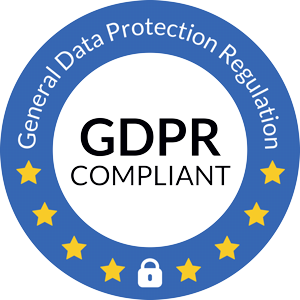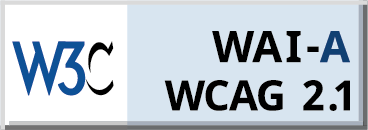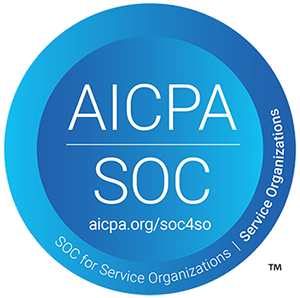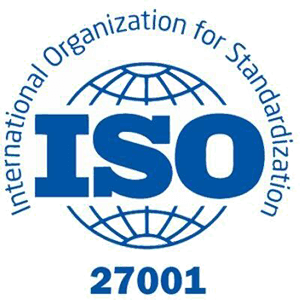In the race for top talent, speed can be your competitive edge - but only if efficiency doesn’t come at the cost of great hires. Time-to-hire is a critical metric that impacts not only the cost-effectiveness of recruitment but also the agility and overall success of the business. Hiring delays can lead to lost productivity, increased workloads for existing staff, and missed opportunities to onboard high-performing candidates who receive competing offers.
At the same time, accelerating hiring processes often risks compromising the thoroughness and rigor needed to ensure a strong cultural and skill fit. This tension between speed and quality has been a persistent struggle for HR teams worldwide. Striking the right balance can feel like walking a tightrope - too slow, and top talent walks away; too fast, and costly hiring mistakes happen.
This is exactly where Talview’s Workflow Tools come into play offering a cutting-edge framework designed to empower recruiters to make faster, smarter, and data-driven hiring decisions without compromising quality. By automating manual tasks, integrating seamlessly with existing systems, and providing actionable analytics, Workflow Tools enable organizations to reduce their time-to-hire substantially while improving the caliber of the hires.
The Speed-Quality Dilemma: Why It Exists and Why It Matters
Before diving into how Talview solves the problem, let’s explore the root causes of the speed-quality tradeoff in recruitment:
1. Manual, Repetitive Processes Slow Down Hiring
Traditional hiring workflows are riddled with tedious tasks: screening countless resumes, scheduling interviews manually, chasing candidates for updates, and consolidating feedback from multiple interviewers. These repetitive activities consume valuable recruiter time that could be better spent on candidate engagement and strategic decision-making.
2. Fragmented Hiring Systems Create Bottlenecks
Many organizations use standalone tools for different aspects of hiring ATS for application management, email/calendar for scheduling, separate assessment platforms, etc. These disconnected systems cause communication silos, duplicated work, and delays in information sharing that stretch the hiring timeline unnecessarily.
3. Subjective, Gut Feeling-Based Hiring Decisions
Without standardized data and objective assessments, hiring decisions often rely heavily on intuition or inconsistent interview feedback, increasing the risk of bad hires. This lack of data-backed evaluation impedes swift, confident decision-making.
4. Candidate Experience Suffers
Long gaps between interview stages, lack of transparency, and poor communication frustrate candidates. Top talent quickly loses interest when processes drag, resulting in higher dropout rates or declined offers.
Without addressing these root causes, companies either slow down hires to protect quality or speed things up at the risk of making costly mistakes.
Workflow Tools: A Framework Designed to Shift the Balance
Talview’s Workflow Automation Tools offer a thoughtfully engineered solution built around three core pillars: automation, integration, and data-driven decision-making. These pillars work together to transform hiring into a faster, smarter, more candidate-friendly process that does not sacrifice quality.
Streamlining through Automation
One of the biggest advantages Talview brings is automating the repetitive, time-consuming tasks in hiring. This includes:
- Automated Screening: Using AI and data-driven algorithms, Talview automatically filters candidate pools based on job requirements and preliminary assessments, drastically reducing the number of profiles recruiters must manually review.
- Interview Scheduling Optimized: Self-scheduling portals allow candidates to book interview slots directly based on recruiter availability, eliminating back-and-forth emails. Automated reminders and interactive voice response (IVR) alerts reduce no-shows.
- Status Updates & Notifications: Candidates and hiring teams receive automated real-time updates on the hiring stage, keeping everyone informed and engaged.
- Predefined Workflow Rules: Recurring process flows are codified into the system so that candidates automatically move through stages once criteria (e.g., passing an assessment) are met - ensuring consistency and speed.
By unlocking hours of recruiter productivity each week, automation allows recruiters to focus on interviewing, candidate engagement, and strategic decisions, rather than administrative drudgery.
Seamless Integration Across Systems
Talview’s Workflow Tools provide robust integration capabilities with Applicant Tracking Systems (ATS) and other HR tools, ensuring smooth data flow and unified information access:
- ATS Synchronization: Candidate data, interview feedback, and status updates sync automatically between Talview and ATS, preventing duplication or errors.
- Unified Notification Mailbox: All communication with candidates and hiring managers is consolidated in one interface, simplifying collaboration and preventing miscommunication.
- Centralized Analytics Dashboard: Recruitment metrics across platforms feed into a central dashboard to provide end-to-end visibility over the hiring pipeline.
This integration maintains the information flow and transparency crucial for reliable, fast decision-making while avoiding the friction of switching between multiple disparate tools.
Data-Backed Hiring Decisions
Perhaps the most transformative aspect of Talview’s Workflow Tools is its comprehensive use of data and intelligence to guide recruitment decisions:
- Smart Candidate Screening: Profiles are matched against job descriptions using AI. Screening tests and video interviews are analyzed using machine learning algorithms that assess cognitive ability, technical skills, and cultural fit.
- Comprehensive Assessment Insights: Digital interviews and assessments not only score candidates quantitatively but provide qualitative analysis, minimizing subjective bias.
- Real-Time Analytics & Reporting: Recruiters and hiring managers gain visibility into every recruitment stage time spent, pass/fail rates, candidate engagement, and quality-of-hire metrics. This enables continuous process optimization.
- Predictive Hiring Outcomes: By analyzing historical hiring data, the system recommends candidates most likely to succeed, helping teams prioritize high-impact hires efficiently.
This data-driven approach accelerates decision-making by providing objective evidence, reducing back-and-forth discussions and uncertainty.
How Workflow Tools Transform the Recruitment Lifecycle
To appreciate the full impact of Talview’s solution, let’s walk through a typical candidate journey enabled by Workflow Tools:
Step 1: Automated Job Posting and Candidate Screening
Once a hiring requisition is raised, Workflow Tools automate job postings across multiple channels. Resumes and application data feed into the platform where AI-driven screening ranks candidates instantly against must-have skills and experience criteria. Recruiters see a shortlist of qualified candidates prioritized for faster consideration, bypassing manual triage.
Step 2: Candidate Engagement and Scheduling
Qualified candidates receive automated invitations to complete digital assessments or video interviews, which can be conveniently scheduled by candidates themselves. Multiple reminders via email and IVR reduce attrition at this stage. Candidate questions and clarifications are automatically tracked and responded to through the unified mailbox, creating a seamless experience.
Step 3: Assessment and Interview Analysis
Assessments such as coding challenges, language proficiency tests, or behavioral evaluations feed directly into the platform. Combined with video interview recordings and AI analysis, hiring teams receive comprehensive, easy-to-interpret insights highlighting strengths, weaknesses, and cultural fit, rather than raw scores alone.
Step 4: Collaborative Hiring Decisions
Feedback from interviewers is collected and consolidated in real time via Workflow Tools. Predefined hiring rules then automatically advance top candidates to the next stage or make offers where applicable. All stakeholders including HR, hiring managers, and external partners stay aligned through transparent notifications and shared dashboards.
Step 5: Continuous Process Optimization
Recruitment leaders monitor analytics dashboards tracking key metrics such as average time in each stage, candidate dropout rates, and assessment pass percentages. Using this data, teams iterate their workflows perhaps shortening interview rounds or adjusting assessment types to continuously improve hiring velocity and quality.
Why You Can Have It All: Speed and Quality Together
Talview’s Workflow Tools prove that organizations don’t need to choose between fast hiring and quality talent acquisition. The framework is explicitly designed to balance both:
- Automation speeds up routine tasks while freeing recruiters to focus on quality interactions.
- Integration ensures that no information is lost, delays are minimized, and all stakeholders collaborate effectively.
- Data-backed evaluations remove subjectivity, enabling quick, confident decisions grounded in evidence.
- A streamlined, transparent process enhances candidate engagement, reducing withdraw rates without cutting corners.
In essence, Talview equips companies to build a recruitment process where speed and quality reinforce each other instead of competing.







Leave a Reply